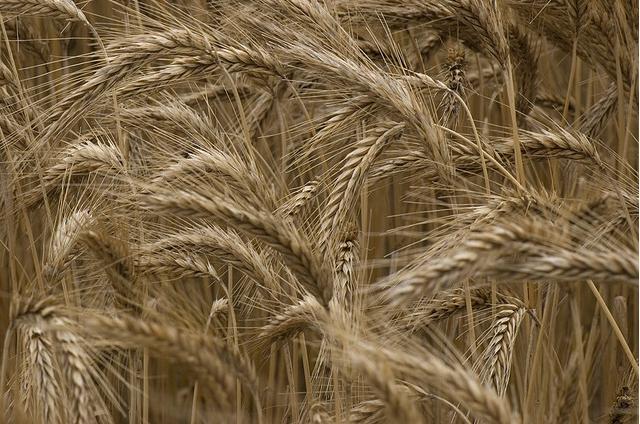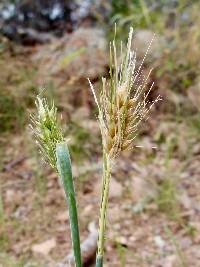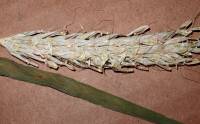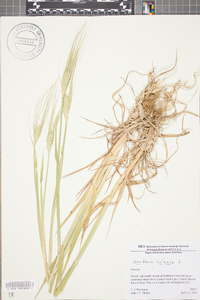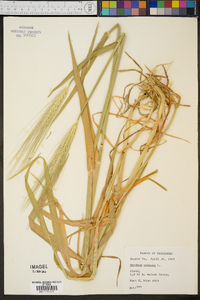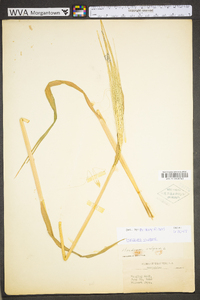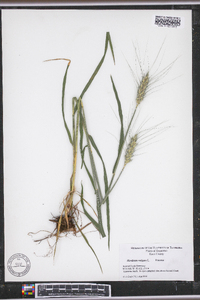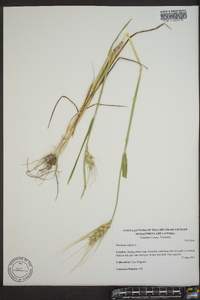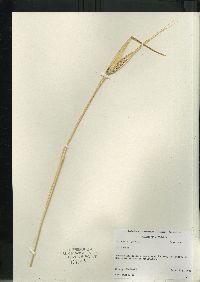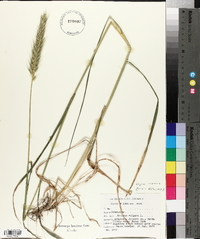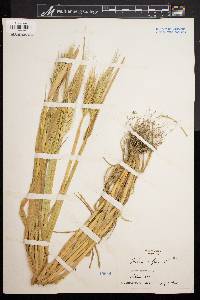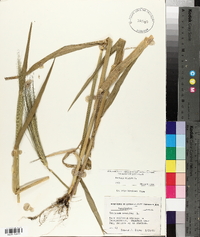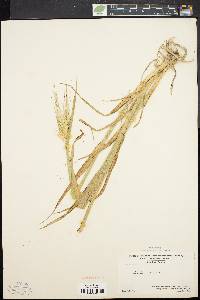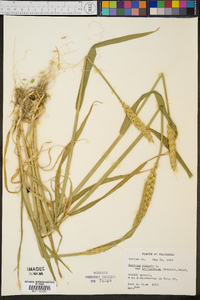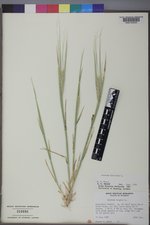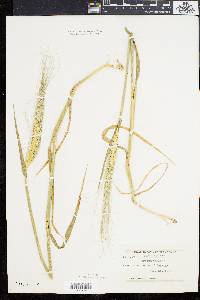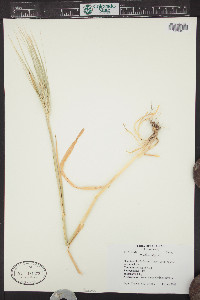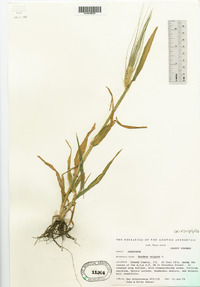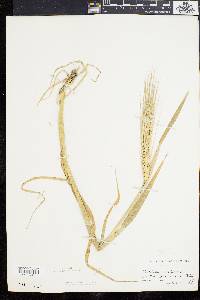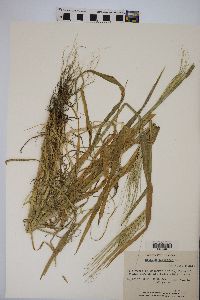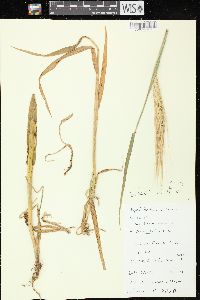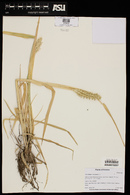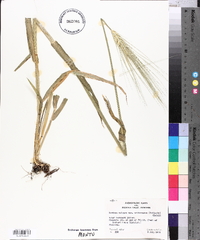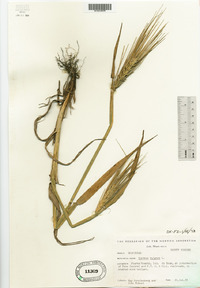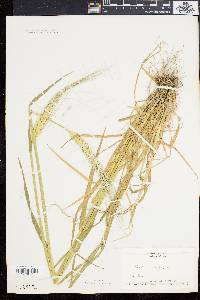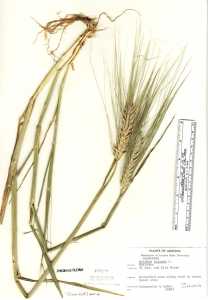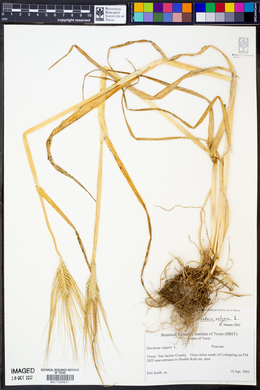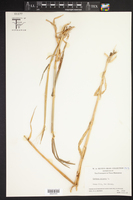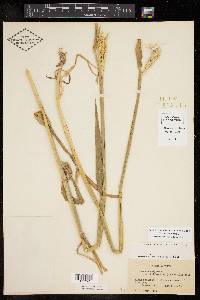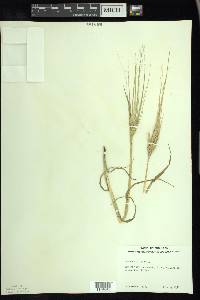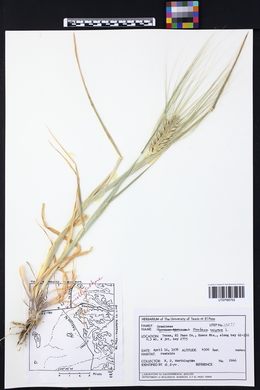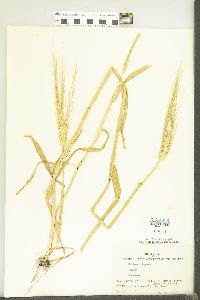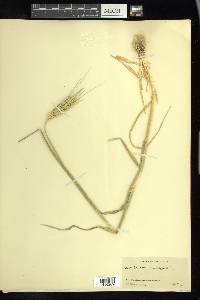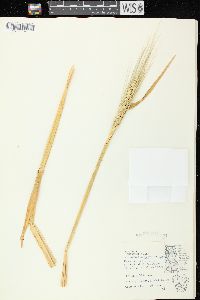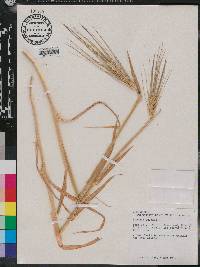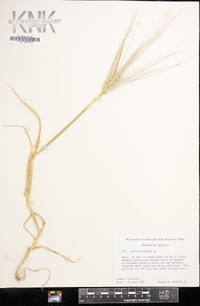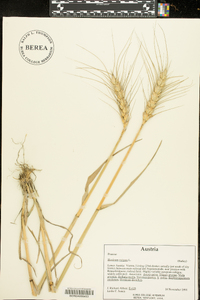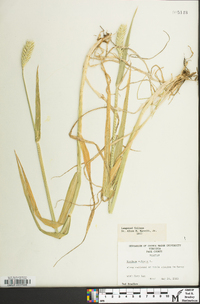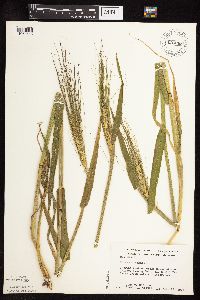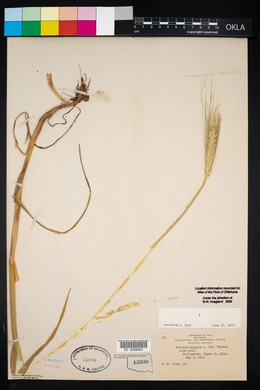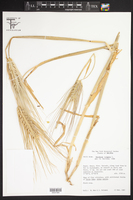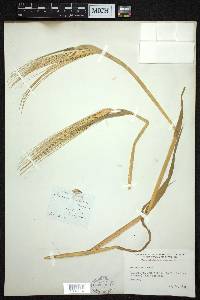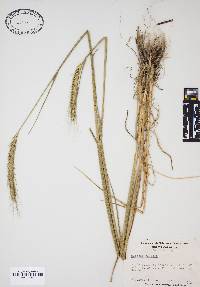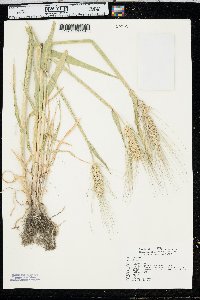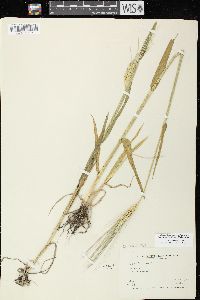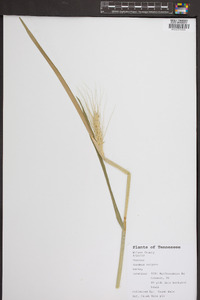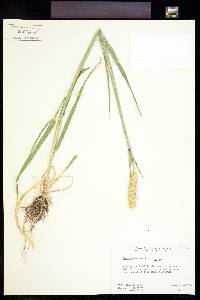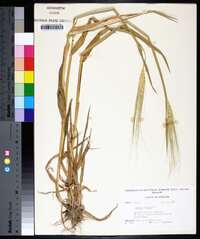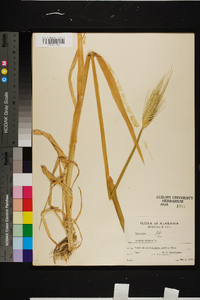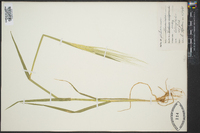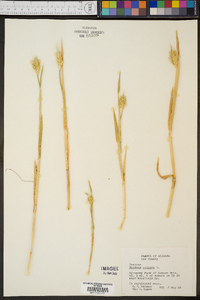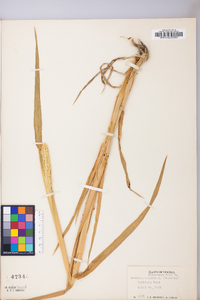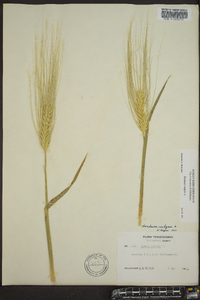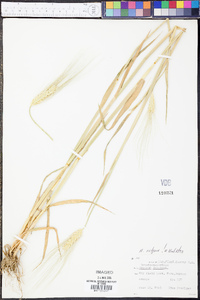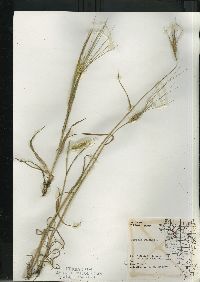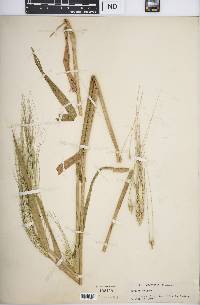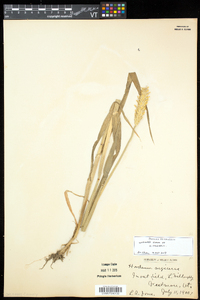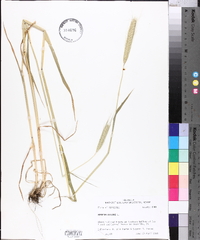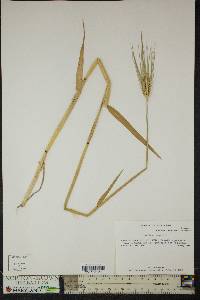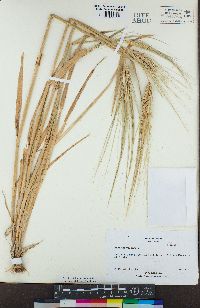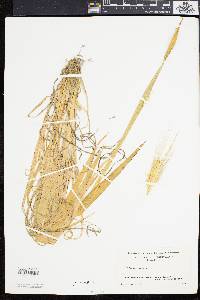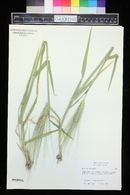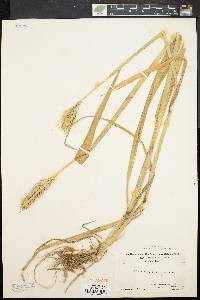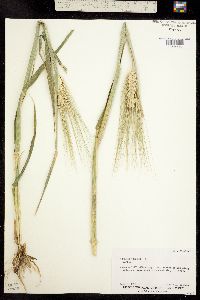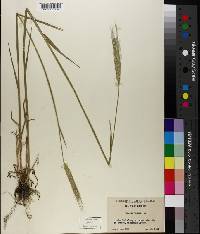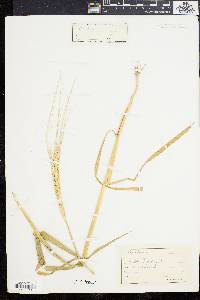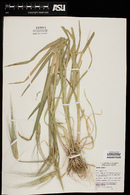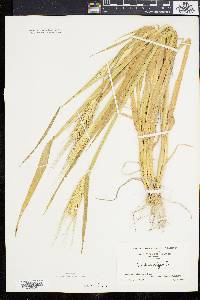
|
|
|
|
Family: Poaceae
Common Barley, more...Barley, cereal barley, Orge, Orge Vulgaire (es: cebada)
[Hordeum aegiceras Nees ex Royle, moreHordeum agriocrithon A.E. Åberg, Hordeum deficiens Steud. ex A. Braun, Hordeum distichon L., Hordeum distichon subsp. zeocrithon (L.) Celak., Hordeum distichum L., Hordeum hexastichon L., Hordeum hexastichum L., Hordeum irregulare Aberg & Wiebe, Hordeum macrolepis Steud. ex A. Braun, Hordeum polystichon Haller f., Hordeum polystichon var. vulgare (L.) Döll, Hordeum sativum Pers., Hordeum sativum var. vulgare (L.) K. Richt., Hordeum tetrastichum Stokes, Hordeum vulgare f. hexastichon (L.) Hiroe, Hordeum vulgare subsp. agriocrithon (A.E. Åberg) Á. Löve, Hordeum vulgare subsp. hexastichon , Hordeum vulgare subsp. spontaneum , Hordeum vulgare var. trifurcatum (Schlecht.) Alef., Hordeum vulgare var. vulgare] |
Plants summer or winter annuals; loosely tufted. Culms to 100(150) cm, usually erect; nodes glabrous. Lower sheaths pilose; upper sheaths glabrous; auricles to 6 mm, well developed even on the upper leaves; blades to 30 cm long, 5-15 mm wide, flat, scabrous or glabrous. Spikes 5-10 cm long, 0.8-2 cm wide, green to purplish or blackish; nodes 10-30, with 3 spikelets per node, 0-2 lateral spikelets, in addition to the central spikelets, forming seed at maturity (resulting in 2-, 4-, and 6-rowed barley); rachises usually not disarticulating at maturity. Central spikelets sessile; glumes 10-30 mm, pubescent, flattened near the base; lemmas 6-12 mm long, 3+ mm wide, glabrous, sometimes scabrous, particularly distally, unawned or awned, awns 30-180 mm, usually scabrous; anthers 6-10 mm, yellowish. Lateral spikelets usually sessile if seed-forming, pedicellate if sterile; pedicels to 3 mm; lemmas usually 6-15 mm, awned when fertile, obtuse to acute when sterile. 2n = 14 (28). Hordeum vulgare is native to Eurasia. Plants in the Flora region belong to the cultivated subspecies, H. vulgare L. subsp. vulgare. The progenitor of cultivated barley, H. vulgare subsp. spontaneum (K. Koch) Thell., has a brittle rachis, tough awn, and, often, shrunken seeds. It does not grow in the Flora region. Hordeum vulgare subsp. vulgare was first domesticated in western Asia. It is now grown in most temperate parts of the world. In the Flora region, it occurs as a cultivated species that is often found as an adventive in fields, roadsides, and waste places throughout the region, not just at the locations shown on the map. There are many distinctive, but interfertile, forms. Bothmer et al. (1995) presented an artificial classification of such forms. FNA 2003, Gould 1980 Common Name: common barley Duration: Annual Nativity: Non-Native Lifeform: Graminoid General: Introduced; large cultivated annual; erect grass up to 60-120 cm tall; glabrous. Vegetative: Blades flat, 5-16 mm wide; sheaths smooth; auricles well developed, up to 6 mm long; ligule 0.5-12 mm, erose-lacerate, ciliolate. Inflorescence: Spike stout, up to 10 cm long (excluding awns) with 2-6 rowed spikelets. All three spikelets of the triad sessile and fertile. Glumes subequal, 6.5-20 mm long, 3-nerved, tapering into scabrous awns; lemmas of the 3 spikelets subequal, faintly 5-nerved, glabrous, tapering into a long, stout, flattened, scabrous awns 6-16 cm long. Ecology: Widely cultivated and most often found as a roadside weed; flowers May-June. Notes: Large introduced annual that can be distinguished by the well-developed auricles up to 6 mm long, which puts it very similar to Hordeum murinum, but distinguished from that species by the lack of disarticulation in the spikes which also have very long awns (6-16 cm long) arising from fertile lemmas. Ethnobotany: Papago, Pomo, and Cocopa all used the seeds for pinole and flour for food. Etymology: Hordeum is the Latin name for barley, while vulgare means common. Synonyms: Many, see Tropicos Editor: SBuckley, 2010 Glabrous annual 6-12 dm; lvs 5-12+ mm wide, with well developed auricles to 6 mm; spikes stout, 6-9(-12) cm (excl. awns), the rachis remaining intact; all 3 spikelets of a triad sessile and fertile (6-rowed barley), or the lateral pair sterile (2-rowed barley); glumes subequal, 6.5-20 mm, linear, broadened below, 3-veined, ascending-pilose, tapering into slender, scabrous awns; fertile lemmas 6.5-12 mm, 5-nerved, tapering into long, stout, flattened, scabrous-margined awns 6-16 cm, or (pearl-barley) awnless and 3-lobed at the tip; anthers 2-2.5 mm; 2n=14, 28. A European cultigen, occasionally found as a waif along roads and railways in our range. (H. distichon L., two-rowed barley) Gleason, Henry A. & Cronquist, Arthur J. 1991. Manual of vascular plants of northeastern United States and adjacent Canada. lxxv + 910 pp. ©The New York Botanical Garden. All rights reserved. Used by permission. From Flora of Indiana (1940) by Charles C. Deam ...... Indiana Coefficient of Conservatism: C = null, non-native Wetland Indicator Status: N/A |

